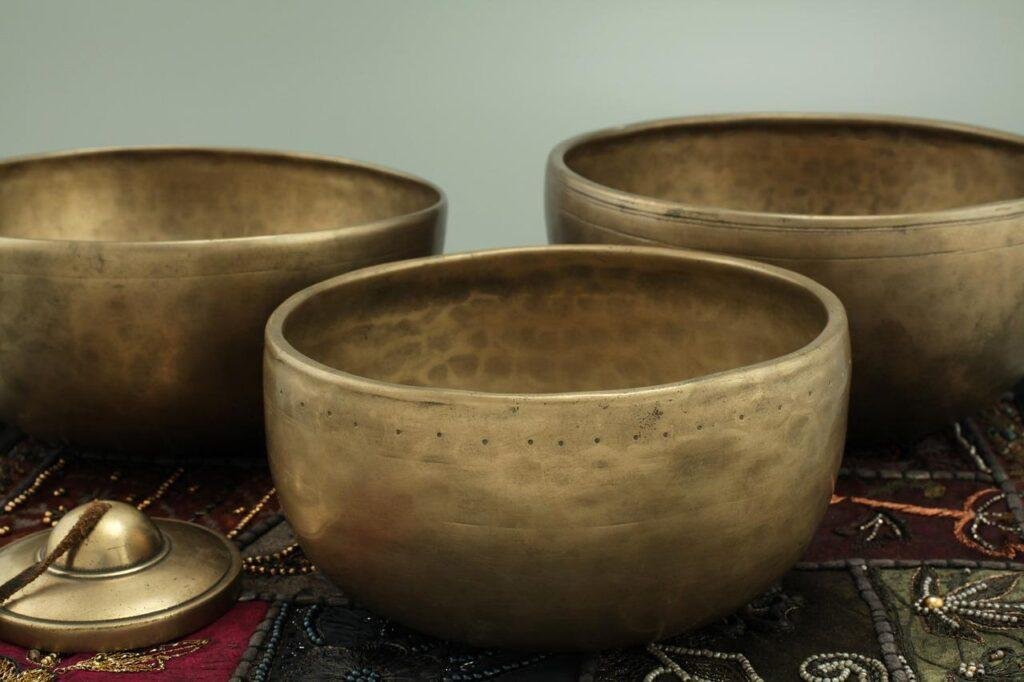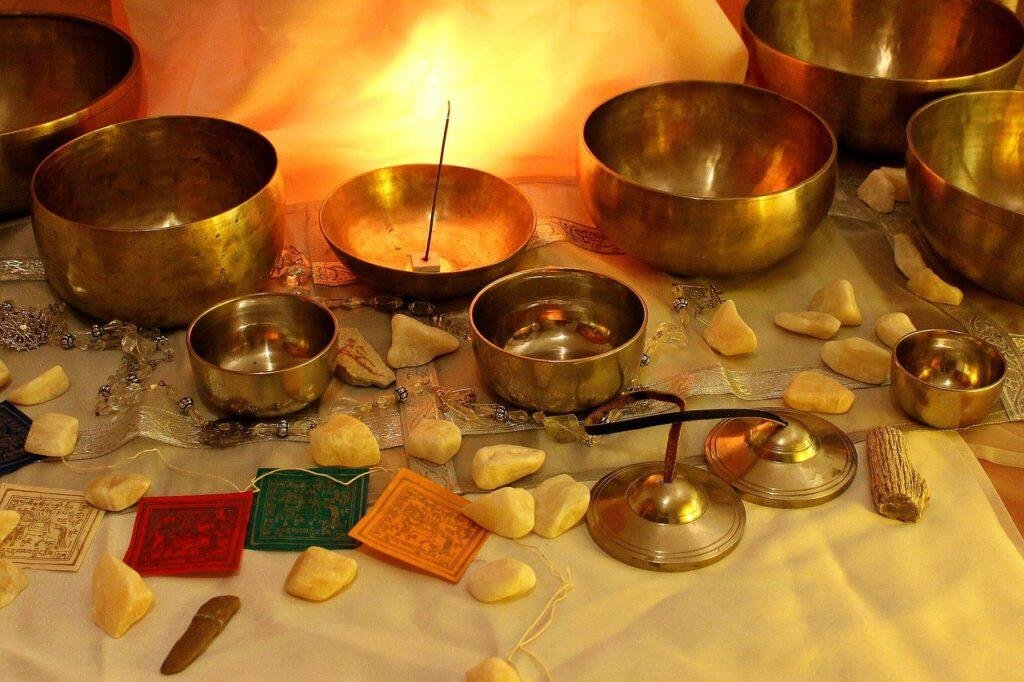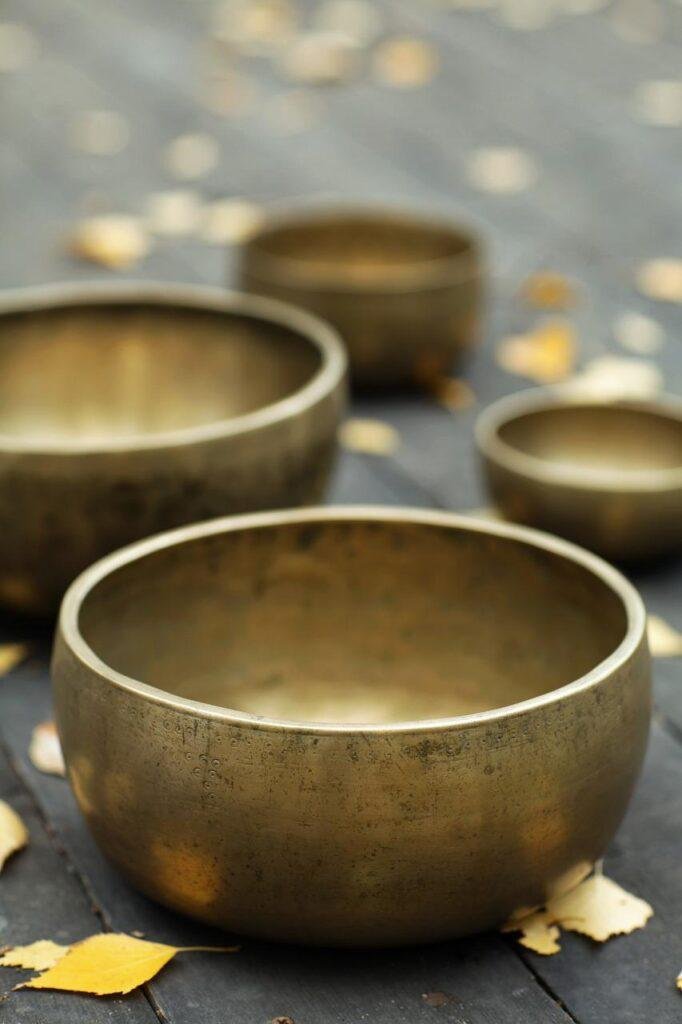



25 years ago , I spent an hour in a shop in Mc Leod Ganj, a village near Dharamsala (Northern India) where the Tibetan government in exile and the residence of the Dalai Lama are located, learning how to ring a Tibetan bowl. I found this “instrument” exciting in many ways and have been using the singing bowls on various occasions since that first purchase (because of course that was when I bought my first bowl). At the time, it was not a very widespread object in France.
When I started my activity on the markets, I began to offer them and to expand my knowledge of this magnificent object. I first sold molded and decorated bowls but I quickly abandoned these products which I now call “tourist bowls” (because they are very beautiful decorative objects) to the detriment of bowls hammered with hand, 7 metals which are the “real” Tibetan bowls.
Today, the Tibetan singing bowl market is booming and many traders offer them because it is a product that “works”. Unfortunately for the consumer, most of them do not know much about it and despite some sales arguments that seem convincing, the product that is sold to you is not a Tibetan bowl manufactured according to the rules of the art. It even happens that the supplied mallet (or stick) is not compatible with the size of the bowl, or even sometimes not supplied. This is why it seemed important to me to write an article that can enlighten you to better choose the bowl that suits you.
There are two types of singing bowls: molded bowls and hammered bowls. Many bowls are currently cast in Nepal. Some by machine in factories (to be avoided, if you are looking for a good bowl) and others in a more traditional way, in small production units. Even if the latter remain altogether rudimentary and artisanal, the bowls are very often made of brass, an alloy of only 2 metals, copper and zinc. This alloy is cast in a single-use limestone mould. Then the mold is broken, the bowl trimmed and polished, even engraved and decorated. In some of these workshops, two or three additional metals are sometimes added to add to the sound quality of the bowl. Bowls produced this way sound…but don’t vibrate. And it is precisely the ability to enter into vibration that will make the quality of your bowl.
Even if they are also found in Nepal, hammered bowls are rather native to India (country of exile for Tibetans who fled the invasion of Tibet by China) and it is in the state of West Bengal that I get those that I offer to you. The making of a hammered bowl requires skilled “labor” because it is a real work of art. At first, we prepare the alloy of seven metals, which correspond to the seven chakras. The composition is known but the quantity of each of these metals is kept secret. These seven metals are silver, copper, tin, iron, mercury, gold and lead. An alloy plate is thus prepared, poured into a small crucible, which will be transformed into a bowl by four hammerers. The alloy plate is placed in a very high temperature oven to make it malleable. Three hammerers then hit it with a mace in a synchronized fashion. The fourth is fitted with tongs with which he grasps the plate and turns it to make it take the shape of the bowl. Then return to the fire, and, again hammering, for several hours. The bowls are thus tuned to the required note.
Finally, after a final hammering, the bowl is trimmed and polished. During this operation, mantras can be chanted. A hammered bowl will therefore ring, enter into vibration, produce its base note which will last a long time after percussion or stopping the movement of the mallet and above all produce the harmonic notes associated with its base note. A hammered bowl is not perfectly round, it is irregular and there is a chamfer on the inside edge which shows that it is a plate that has been worked manually. A good bowl has a thick rim.
Very soon, I will publish an article to give the explanations which make it possible to ring your bowls and which are the notes corresponding to the various chakras
